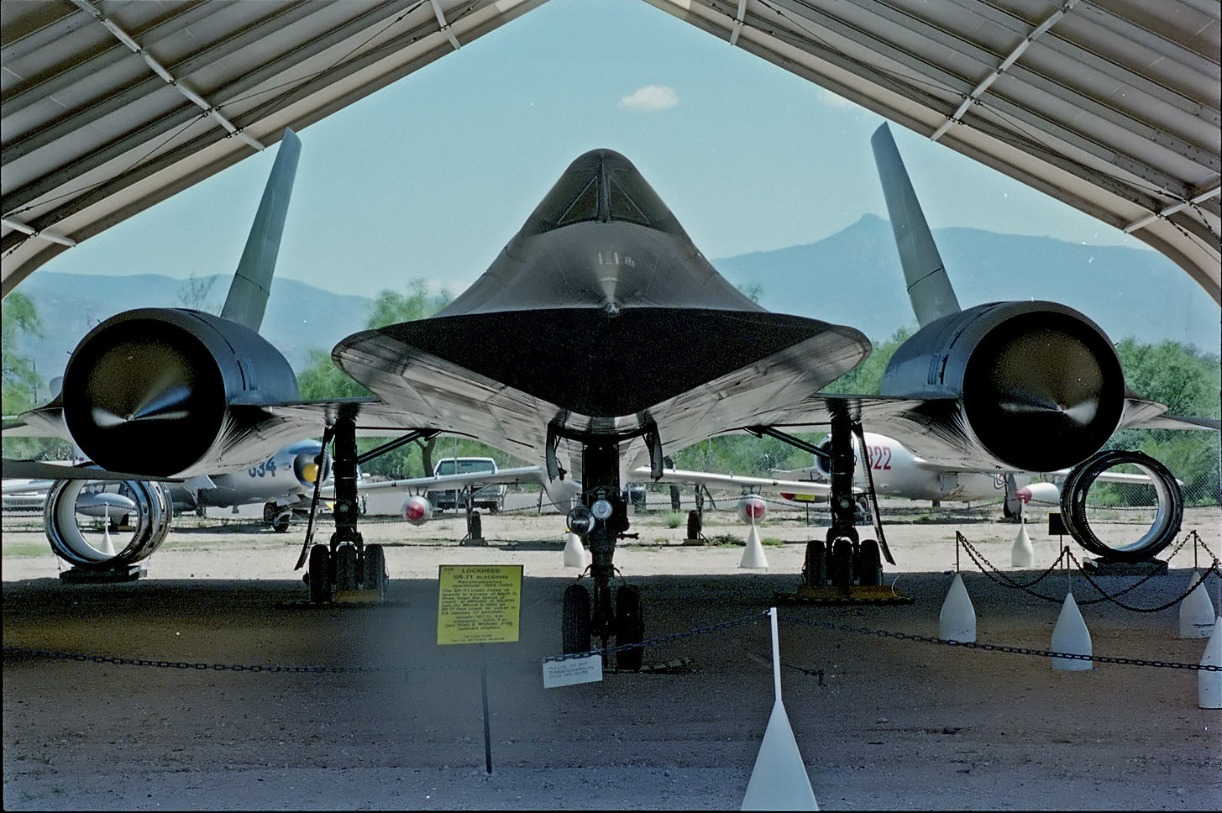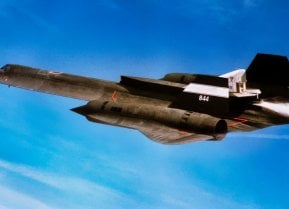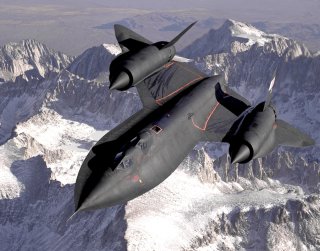The SR-71 Blackbird Spy Plane Was 'Hit' by Shrapnel During Vietnam War
According to the Aviation Geek Club, only one SR-71 airframe was hit by shrapnel during the Vietnam War.
The SR-71 was once nearly taken out: The F-35 Lightening II and F-22 Raptor are widely considered to be the best fighter jets to ever fly the skies.
These formidable fifth-generation airframes possess unparalleled capabilities and top-of-the-line specs. However, one Cold War era platform has both modern fighters beat in one category: speed.
The Lockheed Martin SR-71 can reach speeds of Mach 3.3, that’s more than three times as fast as the speed of sound.
Despite the fact that the “Blackbird” is more than four decades older than its successors, the airframe retains its legendary status in aviation history.
A Brief Overview of the Blackbird
Back in the 1960s, the “black project” to develop the SR-71 airframe was conceptualized as part of Lockheed Martin’s Skunk Works division. Previously, the U.S. Air Force relied on the U-2 airframe for reconnaissance, however, this plane’s slow speed made it a liability.
When the U-2 piloted by Francis Gary Powers was downed by the Soviet Union early in this decade, the CIA’s need for a new and improved reconnaissance plane became very evident.
The Lockheed Martin A-12 was developed to fulfill the CIA’s spy plane needs.
While the airframe was much faster than its U-2 predecessor, the A-12’s aluminum frame could simply not handle the extremely high temperatures caused by flying at such fast speeds.
Ultimately, American engineers turned to titanium to rectify this friction issue.
When the Blackbird was developed, it was fully fitted with a titanium exterior. Able to fly at nearly 2,000 mph, the SR-71 could fly at a higher altitude than any of its foreign and domestic counterparts and at faster speeds, making the plane very challenging for enemy aircraft to detect.
SR-71 Blackbird Plane Came Close to Being Shot Down in Vietnam
During its tenure in combat, the Blackbird notably evaded ‘almost’ all enemy fire.
According to the Aviation Geek Club, only one SR-71 airframe was hit by shrapnel during the Vietnam War.
Former Master Sergeant at U.S. Air Force Jim Goodall told the aviation outlet that out of all the former SR-71 Blackbird pilots he had interviewed, one by the name of Dennis Sullivan could speak of a close encounter with one of these airframes.
As detailed in the interview, Sullivan confronted some debris from part of a Soviet-designed SA-2 over Vietnam, and “he survived multiple SAM missile attacks on his Oxcar while he was cruising at altitudes in excess of 82,000 feet. The damage was found on a post-flight inspection and the composite inboard leading edge had something wedged in it, and the CIA identified it as part of the fusing mechanism of the SA-2.”
An article in Air & Space Forces Magazine later confirmed the incident, adding that:
“On another October flight, pilot Dennis Sullivan detected radar tracking on his first pass over North Vietnam. Two sites prepared to launch missiles, but neither did. During the second pass, however, at least six missiles were fired at Sullivan’s aircraft, each confirmed on mission photos by missile vapor trails. Sullivan saw these vapor trails and witnessed three missile detonations. Postflight inspection of the aircraft revealed that a piece of metal had penetrated the lower right wing fillet area and lodged against the support structure of the wing tank. The fragment was not a warhead pellet but may have been a part of the debris from one of the missile detonations observed by the pilot.”

Despite this incident, the Blackbird could still arguably be referred to as one of the most invincible airframes to ever fly the skies.
Maya Carlin is an analyst with the Center for Security Policy and a former Anna Sobol Levy Fellow at IDC Herzliya in Israel. She has by-lines in many publications, including The National Interest, Jerusalem Post, and Times of Israel. You can follow her on Twitter: @MayaCarlin.
Image Credit: All Images are Creative Commons.


